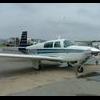Trick for fuel tank repair
-
Members Online
- EricJ
- christaylor302
- Ragsf15e
- patrickf
- gwav8or
- Mark89114
- Brian2034
- jetdriven
- bigmo
- Mahsine Parthime
- MikeOH
- Mmrkulic
- Aerodon
- Skates97
- Shiroyuki
- M20S Driver
- A64Pilot
- LANCECASPER
- Vulcan81
- Adverseyaw0317
- Meshach
- Nico1
- 00-Negative
- Aaviationist
- Buckeyechuck
- Skyland
- Scooter
- Lax291
- Rmfriday
- catchman86
- pkellercfii
- katzhome
- Shawn26
- Bartman
- Ned Gravel
- 1980Mooney
- gabez
- Robm
- chips452
- Eric Burris
- TCC
- PT20J
- Gee Bee Aeroproducts
- Larry
- Jason 1996 MSE


Recommended Posts
Join the conversation
You can post now and register later. If you have an account, sign in now to post with your account.